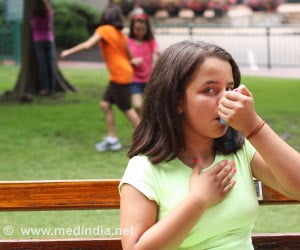
Researchers from the University of Birmingham (UK), the Indian Institute of Technology Delhi (IIT Delhi), the Central Road Research Institute (India) and the Desert Research Institute (USA) have been collaborating to provide key scientific evidence in this area. The aim of their study is to analyse the composition of particulate matter and to understand its sources in Delhi, which will assist in the development of targeted policy instruments to control air pollution.
Air samples were collected in June 2013 (summer) and December 2013-January 2014 (winter) adjacent to a heavy traffic site on Mathura Road, Delhi. The site is also influenced by industrial emissions from the Okhla Industrial Area and biomass emanations from nearby dwellings.
Worryingly, researchers found that average 12 hour PM2.5 concentrations in winter were significantly higher than the 24 hour National Ambient Air Quality Standard in India (60 Micrograms per Cubic Meter of Air). PM2.5 are fine particles, less than 2.5 micrometres in diameter. Normally, these smaller particles can penetrate in to the respiratory system and cause negative health effects. In fact, a majority of the overall particles were found to be in the small size range, which can easily be inhaled and cause irreversible damage.
Several harmful components, including lead, zinc and polycyclic aromatic hydrocarbons were found to be present in very high concentrations in winter. These particles are associated with respiratory diseases such as asthma and bronchitis, and they can also cause inflammation and exacerbate cardiovascular diseases. Earlier in 2014, ambient air pollution was identified as one of the top 10 health risks for India.
The quantitative analysis shows that sources for particulate matter include soil, road dust and tailpipe emissions from vehicles, as well as wood, coal and waste burning. Road dust and soil levels in the air increase in summer when temperatures are high and rainfall is low. However, in winter, when a lot of people use wood and other substances for heating, lower temperatures, accompanied with little or no wind, can lead to a build-up of pollutants in the atmosphere.
Advertisement
"Exposure to particulate matter has negative consequences for human health but cost-effective abatement measures depend upon a quantitative knowledge of the contributions of different sources in the atmosphere. This work contributes to the body of knowledge which underpins policy development"
Advertisement
"This is an exciting piece of research and we are hopeful that this data will help in preparation of targeted action plans for air pollution control. We are continuing to engage with the academic community in India to further assess the health implications."
The research project is one of the Trilateral Research in Partnership (TRIP) Awards, the first strand of the successful UK-India Education and Research Initiative (UKIERI) to partner with the United States. Analysis of data is ongoing, with IIT Delhi continuing to collect air samples.
Source-ANI











